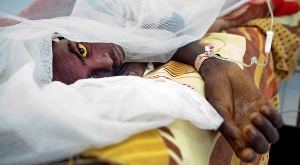The Epidemic Management Committee of the Upper East region has pegged the number of cerebrospinal meningitis cases recorded so far in the region at 16.
Seven of the reported cases are said to have been recorded in the regional capital Bolgatanga.
Speaking to Starr News Thursday, the Upper East regional Health Director, Dr. Kofi Issah, disclosed that eight of the cases have been confirmed as the W135 category of the disease in four of the region’s 13 municipalities and districts. The region, according to him, has not recorded any case of pneumococcal meningitis yet.
“All the 16 cases are alive. No death. This is from 1st January to date. Over the same period last year, we recorded nine cases. The only district which has reached the alert threshold is Bolga. For now, we are focusing on Bolga but not forgetting the fact that to fight CSM you would need to do what you would call creating fire belt so the fire doesn’t extend instead of fighting the fire. That means that the districts which don’t have cases yet shouldn’t rejoice. That is where they have to intensify their efforts and treat anybody who appears with the symptoms very promptly,” the Regional Director said.
Five of the confirmed cases are from the Bolgatanga Municipality whilst the other three affected areas? Talensi, Bongo, and Kassena-Nankana West districts? have one confirmed case each.
Whilst epidemic management sub-committees as well as rapid response teams and health education crews have been revamped in the region to prevent an outbreak, logistics and supplies are being mobilised in all the 13 municipalities and districts to deal with any epidemic.
“The decisions are that all the thirteen districts should hold epidemic management committee meetings preferably by next week, assess the situation and report. Members of the regional epidemic [management] committee shall also visit the districts as soon as possible to assess the level of preparedness of the districts and help to mobilise resources if appropriate. To our core staff, the caution is for them to equip themselves properly and not to misinform the public if they are not very sure of their facts,” Dr. Issah disclosed to Starr News at the close of a meeting held Thursday this week by the Regional Epidemic Management Committee.
It was the first time the committee has held a crucial meeting this year after two cases of CSM hit the region last week. The Regional Director also encouraged the media to contact the regional health directorate if in need of resource persons to educate the public “because everybody has to be on the same page and we should be seen to be talking the same thing instead of people giving different versions“.
CSM is a familiar terror in northern Ghana because the area falls within the CSM belt that runs from Senegal in West Africa to Ethiopia in East Africa. Its symptoms include headache, stiffness of the neck associated with fever, vomiting and inability to tolerate light and a loud noise. Between 2012 and 2015, at least 760 cases of the disease were recorded in the Upper East Region. Out of this figure, 56 people died. Residents are scared as the dreaded disease looks to unleash more havoc when the heat hits its peak in the months ahead.
Health News of Friday, 29 January 2016
Source: starrfmonline.com

















